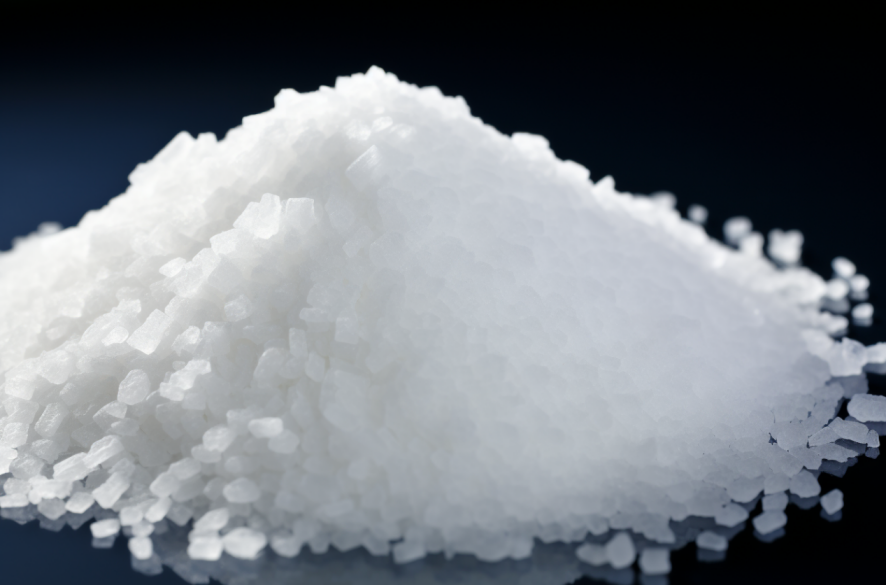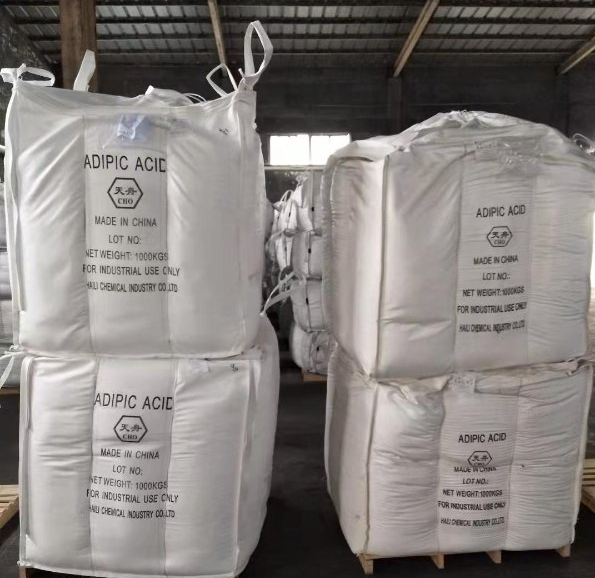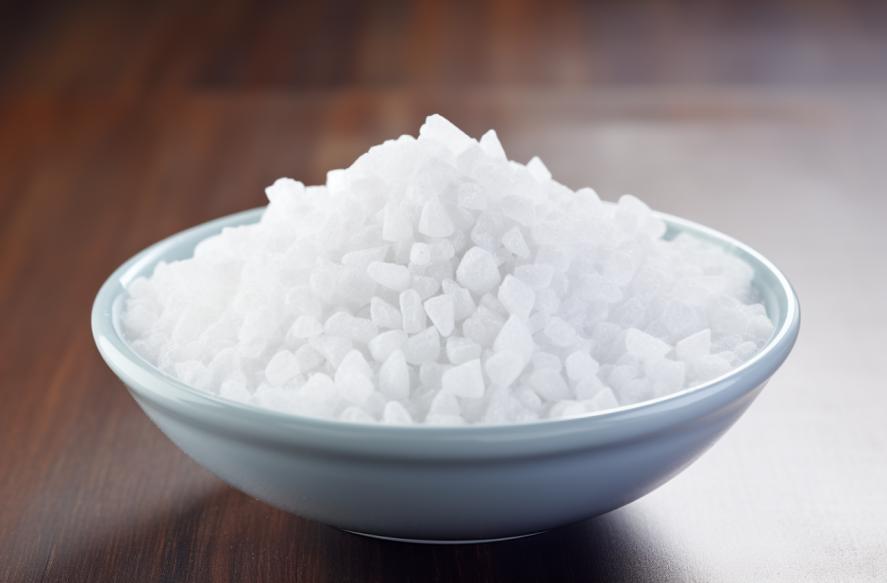How Can Advanced Catalytic Processes Improve Adipic Acid Production?
03/06/2024
Adipic acid, a crucial organic compound, is widely used in the production of nylon, polyurethane, and plasticizers. This comprehensive overview explores its market status, highlighting growth trends and regional analysis. It delves into industry needs, emphasizing the role of adipic acid in various applications. The article addresses production challenges and innovative solutions, showcasing how advanced technologies and sustainable practices are transforming the industry. Special focus is given to CHEMBROAD, a leading manufacturer known for quality and innovation. Discover the future outlook of adipic acid and its significant impact on diverse industrial sectors.

Introduction to Adipic Acid
1.1 Chemical Nature of Adipic Acid
Adipic acid, also known by its IUPAC name hexanedioic acid, is a white crystalline solid primarily used as a precursor for the production of nylon. With the chemical formula (CH2)4(CO2H)2, it is an essential organic compound in various industrial applications.
1.2 Historical Context
Adipic acid was first synthesized in the 1900s, and since then, it has become a crucial component in numerous industrial processes. Its significant role in the production of nylon-6,6 fibers has propelled its demand, making it a staple in the chemical industry.
1.3 Production Methods
There are several methods for producing adipic acid, including the oxidation of cyclohexane and the carbonylation of butadiene. Each method presents unique advantages and challenges, which will be discussed in detail later in the blog.
Market Status of Adipic Acid
2.1 Global Market Overview
The global market for adipic acid is robust and steadily growing. In 2023, the market size was estimated to be worth several billion dollars, with a compound annual growth rate (CAGR) expected to sustain at around 4-5% over the next decade. The increasing demand for nylon, polyurethane, and plasticizers drives this growth.
2.2 Regional Market Analysis
The market demand for adipic acid varies regionally. North America and Europe hold significant market shares due to their advanced manufacturing sectors. Meanwhile, the Asia-Pacific region is witnessing rapid growth, spurred by increasing industrial activities and infrastructural developments in countries like China and India.
2.3 Key Market Players
Several key players dominate the adipic acid market, including BASF, Ascend Performance Materials, and CHEMBROAD. These companies invest heavily in research and development to improve production efficiency and reduce environmental impact, thereby maintaining their competitive edge.
Industry Needs for Adipic Acid
3.1 Nylon Production
One of the primary uses of adipic acid is in the production of nylon-6,6. Nylon is a vital material used in textiles, automotive components, and various consumer goods. The high demand for durable and lightweight materials in these industries underscores the importance of adipic acid.

3.2 Polyurethane Production
It is also a critical component in the manufacture of polyurethane. Polyurethane is used in a wide range of products, including foams, elastomers, and coatings. Its versatility and resilience make it an essential material in construction, automotive, and consumer goods industries.
3.3 Plasticizers and Resins
In addition to nylon and polyurethane, it is used to produce plasticizers and resins. These materials enhance the flexibility, durability, and longevity of various plastic products, making them indispensable in the manufacturing of flexible PVC and other plastic materials.
Challenges in Production
4.1 Environmental Concerns
The production of adipic acid involves significant environmental challenges, primarily due to the emission of nitrous oxide (N2O), a potent greenhouse gas. Addressing these emissions is crucial for reducing the environmental impact of adipic acid production.
4.2 Raw Material Sourcing
Sourcing raw materials for adipic acid production, such as cyclohexane, poses another challenge. The availability and price volatility of these raw materials can impact production costs and market stability.
4.3 Technological Limitations
Current production technologies for adipic acid have limitations regarding efficiency and scalability. Innovations in catalysis and process optimization are necessary to overcome these barriers and improve overall production efficiency.
Adipic Acid Solutions for Industry Challenges
5.1 Advanced Catalytic Processes
One way adipic acid manufacturers like CHEMBROAD address production challenges is through advanced catalytic processes. These processes enhance reaction efficiency and reduce the generation of by-products, thereby minimizing environmental impact and lowering production costs.
5.2 Sustainable Raw Materials
The industry is also exploring the use of bio-based raw materials to produce adipic acid. These sustainable alternatives reduce dependence on petroleum-based sources and contribute to a greener production process. Bio-based it is gaining traction as a viable solution to environmental concerns.
5.3 Innovative Emission Control
Implementing innovative emission control technologies is another critical approach. For instance, catalytic reduction systems can significantly lower N2O emissions during adipic acid production. Companies like CHEMBROAD are investing in such technologies to meet stringent environmental regulations and improve sustainability.

CHEMBROAD: A Leading Adipic Acid Manufacturer
6.1 Company Overview
CHEMBROAD is a prominent player in the adipic acid market, known for its commitment to quality and innovation. The company has established itself as a reliable supplier of high-purity adipic acid, catering to various industrial needs globally.
6.2 Production Capabilities
With state-of-the-art manufacturing facilities, CHEMBROAD has the capacity to meet large-scale production demands. The company employs advanced production techniques and strict quality control measures to ensure consistent product quality and supply reliability.
6.3 Research and Development
CHEMBROAD places a strong emphasis on research and development. The company continuously explores new methods to enhance production efficiency, reduce environmental impact, and develop sustainable alternatives. Their R&D initiatives are crucial for staying ahead in the competitive adipic acid market.
Future Outlook
The future of the adipic acid market looks promising, driven by the ongoing demand in various industrial sectors. Advances in production technologies and a growing focus on sustainability are likely to shape the market dynamics in the coming years.
7.1 Industry Impact
Adipic acid remains an essential chemical in numerous industrial applications, from nylon and polyurethane production to plasticizers and resins. Addressing the challenges in its production process through innovation and sustainable practices is key to ensuring its continued relevance and market growth.
7.2 CHEMBROAD’s Role
As a leading manufacturer, CHEMBROAD is at the forefront of these developments, continuously striving to improve production methods and meet the evolving needs of the industry. Their efforts in research, sustainability, and quality assurance position them as a crucial player in the global adipic acid market.
Conclusion
In conclusion, it is a vital industrial chemical with a significant impact on various industries. The market for it is robust, with promising growth prospects. By addressing production challenges and focusing on sustainability, manufacturers like CHEMBROAD are paving the way for a more efficient and environmentally friendly future in adipic acid production.




